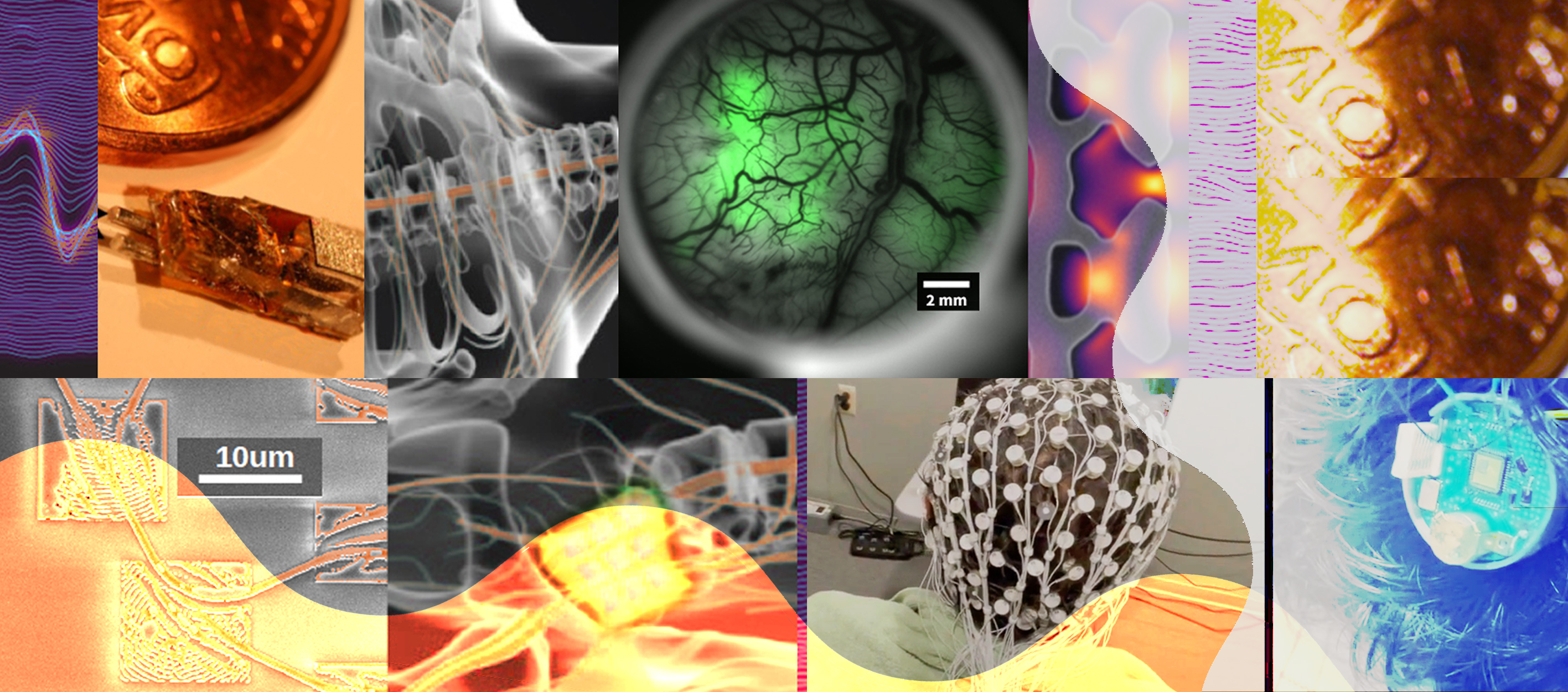
Biological properties can be measured and altered using electronics, magnetics, photonics, sensors, circuits, and algorithms. Applications range from basic biological science to clinical medicine and enable new discoveries, diagnoses, and treatments by creating novel circuits, devices, systems, and analyses.
Examples include:
- Retinal implants for vision restoration
- Measuring molecular concentrations
- Measuring and altering activity of electrically-excitable cells such as neurons
- Building implantable bio-sensors, bio-stimulators, and closed-loop delivery systems
- Brain-machine interfaces
- On-chip imaging and sensing
- Photonic systems for in vivo imaging
- DNA synthesis and sequencing
- Nucleic acid synthesis, sequencing, and analysis
- THz and differential phase contrast x-ray imaging
- Wireless sensing and powering
- Constructing low-cost devices for point-of-care medical applications
- Designing new algorithms and systems for early cancer screening and detection
Integrated Circuits & Power Electronics: This area is concerned with the application-driven design of electronic circuits and systems, spanning a wide spectrum from low frequencies to mm-wave and THz. The research incorporates a variety of technologies, ranging from emerging nano and MEMS devices, nano-CMOS and BiCMOS processes, as well as discrete electronics for power conversion. The specific research thrusts include:
- Mixed-signal integrated circuit design (data converters, sensor interfaces, imaging and selected areas of bio-instrumentation);
- RF and mm-wave integrated circuit design (wideband communication systems, microwave and millimeter-wave imaging, phased arrays, integrated antennas);
- Power electronics (switch-mode power converters, resonant converters; switched mode RF power amplifiers passive component design, converters using SiC and GaN at 10s of MHz, high voltage supplies, wireless power transfer systems, pulsed power applications, high voltage supplies, wireless power transfer systems, pulsed power applications);
- Nanosystems (digital and analog circuits and systems) enabled by emerging nanotechnologies, including aspects of design methodology, validation and test, approximate computing, and robust circuits and systems;
- Silicon technology modeling both for digital and analog circuits, including optoelectronic/RF applications, bio-sensors and computer-aided bio-sensor design, wireless implantable sensors.
Biomedical Imaging: Basic science questions, as well as clinical applications and translation in collaboration with investigators from the Stanford School of Medicine, are applied to a broad range of imaging technologies – from devices to systems to algorithms – for biomedical applications ranging from microscopy to whole-body diagnostic imaging and image-guided interventions. Examples include:
- Optics,
- Ultrasound,
- Multiphysics approaches including photoacoustic and thermoacoustic imaging systems,
- Optical coherence tomography (OCT)
- Computed tomography (CT),
- Positron emission tomography (PET),
- Magnetic resonance imaging (MRI),
- Focused ultrasound surgery (FUS),
- Differential 3-D Phase Contrast X-ray Imaging,
- Image processing and understanding,
- Image visualization and guided interventions (including mixed reality),
- Electrophysiology and Imaging,
- Computational microscopy.
| EE ACTIVE FACULTY | ||
|---|---|---|
| Amin Arbabian | Kwabena Boahen | Siddharth Krishnan |
| Subhasish Mitra | John Pauly | Ada Poon |
| Tom Soh | Shan Wang | Tsachy Weissman |
| EMERITUS FACULTY | ||
|---|---|---|
| James S. Harris | Gregory Kovacs | Dwight Nishimura |
| Fabian Pease | Bernie Widrow | |
| ALL FACULTY | |
|---|---|
| Biomed devices, sensors, and systems - View all associated faculty | |
| COURTESY FACULTY | ||
|---|---|---|
| Halleh Balch | E.J. Chichilnisky | Shaul Druckmann |
| Craig Levin | Paul Nuyujukian | Daniel Palanker |
| Brian Wandell | ||
| Adam Wang | Lei Xing | Serena Yeung |
| James Zou | ||